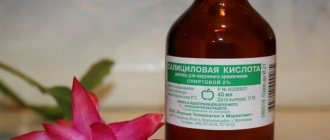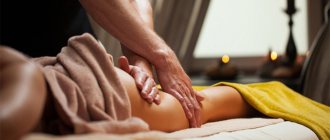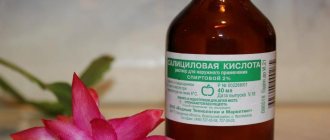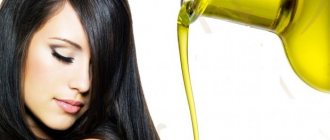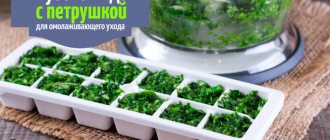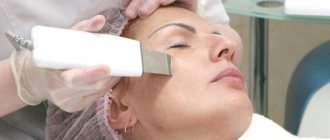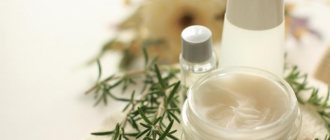Composition of cosmetic products: why is it so important?
Taking a look at the overall environmental situation in the world, it may seem that the imperfect composition of your cosmetics is not such a problem.
But will your opinion change if I say that some components can not only harm your skin, but also change your hormonal levels?
I think the answer is obvious.
As an example, I will tell you about the possible consequences of low-quality cosmetics and the dangerous products inherent in their composition.
So, the presence of harmful and dangerous substances in cosmetics can contribute to:
- Disturbance of microflora.
Some components can “kill” the natural microflora of the skin, destroy its barrier, and lead to the death of beneficial microorganisms. The result is a decrease in the supporting forces of the skin to resist harmful microorganisms and bacteria.
- The appearance of allergic reactions.
Allergies are not just minor rashes or itching. Allergies can also manifest themselves in the form of severe swelling and skin diseases. It is often accompanied by the fact that the skin layer becomes thinner and, of course, weaker.
- Penetration of carcinogens and toxins.
Carcinogens are very dangerous substances that affect not only the appearance of the skin, but also cause tumors, cancer and changes at the genetic level.
- Mutations.
Mutagenic effects are the same case when harmful components cause not only visible changes, but also damage to the genetic material. For this reason, the consequences of such an action may occur not only for you, but also for your children or even grandchildren.
- Hormonal imbalances.
If hormonal levels are disrupted, it means that sooner or later problems with reproductive function will arise. This is dangerous not only for women, but also for men.
It turns out that harmful components pose a danger not only to those who use them, but also to future generations. Not to mention the harm to nature, which can hardly be eliminated so easily by planting several dozen trees.
But assessing the harm is not enough - you need to know the enemy by sight.
The difference between creams in composition depending on their purpose
Creams are divided into many different groups : day, night, moisturizing, nourishing, anti-aging and others.
How does their composition differ?
- Day and night creams are almost the same in terms of the content of certain components. But the texture of night cream is usually lighter; it does not contain silicones, which give the skin an instant glow and a well-groomed appearance. Substances that are incompatible with ultraviolet rays are added to the night cream.
- An anti-aging product has more differences. It usually contains collagen, retinol, vitamins C and A, coenzyme Q10, and peptides. These substances smooth out small and even large wrinkles, restore elasticity to the skin and tighten the oval of the face.
- Moisturizing and nourishing cream are also different from each other. A moisturizer contains ingredients that provide moisture to the skin as well as moisture-retaining ingredients. The most popular of them is hyaluronic acid. The consistency of the nourishing cream is thicker and is less absorbed. Its main part is vegetable and animal fats. It often contains fat-soluble vitamins and hormones. Cosmetologists usually recommend using a moisturizing cream in summer and a nourishing cream in winter.
- A product for problem skin , first of all, should contain antimicrobial and exfoliating components. These include salicylic and azelaic acid, copper and zinc, clay, sulfur, AHA acids, retinoids, triclosan. It is better to use such a product as prescribed by a doctor, so as not to harm yourself.
- massage cream is made on the basis of natural oils, which, when massaged, penetrate into the deep layers of the dermis and act from the inside. In such a product you can often find extracts of various plants, ceramides and peptides, amino acids.
- Several years ago, BB and CC creams . Their composition is no different from regular moisturizers, but they also contain tinting ingredients that create an even complexion and disguise imperfections.
TOP harmful substances in cosmetics
All harmful components of cosmetics can be divided into two groups: especially dangerous and conditionally dangerous.
The first group is components whose harm has been proven through research, the second category is components that are used and can cause non-fatal harm, but have a negative impact on the condition of the skin. In addition, they can have a cumulative effect.
In a separate group we will highlight products that are unacceptable for pregnant women and children.
1) The most dangerous components: what are they?
Among the most unsafe ingredients I have included those that in one way or another have a negative effect. Many of them are prohibited by international standards and organizations.
Even if the consequences of their use are not immediately visible, they appear after a short time.
| Substances | Designation | Application in cosmetics | Negative Impact |
| Benzene | Benzene | Cheap moisturizer for facial skin. Often found in eye and face creams. | It is a toxic substance that causes cancer. Benzene has been proven to be a lethal component for bone marrow. |
| Phthalates | Phthalates or DEP (diethyl phthalate | They are components of nail and hair varnishes. The reason is to give the substances elasticity and a specific odor. | Affect reproductive function and can cause infertility. There is an idea that phthalates are a common cause of skin cancer. |
| Formaldehyde | DMDM (Dimethylol Dimethol Hydantoin) | Known for its bactericidal effect, it is therefore a common component of creams, masks and lotions. | It is a toxin that can cause vision and breathing problems. Often contributes to allergies and dermatitis. |
| Butylated hydroxyanisole | Butylated hydroxyanisole | A popular preservative known for its antioxidant properties. | Has a high level of toxicity. May affect immune and reproductive functions. Dangerous for the liver. |
| Parabens | Butylparaben, Propylparaben, Ethylparaben, Methylparaben | Good preservatives help extend the shelf life of cosmetics. | Aggressive substances that provoke breast cancer. Can cause premature aging of the skin. |
| Lauryl sulfate and sodium laureth sulfate | SLS, sodium lauryl sulfate | Popular foaming agents that are used in almost all shampoos and shower gels. | Synthetic substances that deprive the skin of moisture lead to dryness. May influence the appearance of dandruff and skin diseases. |
| Triclosan | Triclosan | An antibacterial agent, most often found in toothpastes and deodorants. | It has a cumulative effect, irritates and damages the skin's protective barrier. In large quantities it can affect hormonal levels, as well as the functioning of the cardiovascular system. |
Most such dangerous components are contained in decorative cosmetics, although they are often found in skin care lines.
Ideally, cosmetic products should be labeled as such
2) Less dangerous, but not at all desirable components
If you should not use particularly harmful components, then conditionally dangerous ones are acceptable for use.
But, frankly speaking, I would advise you to refrain from purchasing with the following ingredients:
- Bentonite.
A commonly used thickener or emulsifier. Despite its wide range of effects, bentonite can cause dry skin, interfere with its regeneration and disrupt metabolism.
- Aluminum.
Can be found in cosmetics as a dye. The harmful effect is the ability to damage nerve endings and tissue.
- Zinc stearate.
Present in cosmetics as a filler and water repellent. In fact, it provokes irritation, allergic reactions and skin diseases.
- Lanolin.
A softening and moisturizing cosmetic ingredient used in products for skin, hair and nails. It is a dangerous component for sensitive skin, causing clogged pores, rashes and acne.
- Petrolatum.
Another popular moisturizing ingredient. Does not have the best effect on the condition of the skin. It clogs pores and provokes the appearance of comedones and pimples.
- Glycerol.
Present in cosmetics as a moisturizer. Contained in most modern creams. In fact, it dehydrates the skin, does not allow it to “breathe”, and draws out moisture.
- Mineral oils.
Multifunctional components that many manufacturers boast about. Only in fact, mineral oils are petroleum derivatives that do not moisturize the skin, but on the contrary make it vulnerable and weak.
Unfortunately, conditionally dangerous components can be found much more often than particularly dangerous ones. The reason for this is the absence of explicit prohibitions from the legislative framework.
On my own behalf, I can say that I myself have often encountered the use of face creams that contained glycerin.
This component did not cause any allergies or irritations in me. However, the feeling of hydration and softness lasted only until the next wash. After it, the skin again became dry and tight.
So, if you have dry or sensitive skin, pay special attention to the presence of glycerin in the composition.
TOP 15 potentially dangerous components of cosmetics
3) Cosmetics for children: what should you avoid?
As you know, pregnant women should be especially vigilant in choosing care products for themselves, because all the negative components will affect not only their health, but also the condition of the baby.
For this reason, I decided to supplement the list with 4 ingredients that are not at all recommended for use by pregnant women and children.
| Ingredient | Designation in cosmetics | What is it used for? | What is the danger? |
| Boric acid | Boric Acid | For healing the skin, eliminating acne and rashes. | It is a complex chemical element. Dangerous if ingested and for children's sensitive skin. |
| Oxybenzene | Oxybenzone | Used as a preservative and flavoring agent. | It has a cumulative effect, causing sensitivity and dry skin. |
| Hydantoin | DMDM Hydantoin | A popular antiseptic, it has a pronounced antimicrobial effect. | Strong allergen, has signs of carcinogenic effects. Can harm the immune system. |
| Talc | Talk | A commonly used absorbent and softener. | May enter the respiratory tract and cause breathing problems. The most dangerous are the vapors of the product. |
Don't forget that children's skin is especially sensitive and therefore requires careful and attentive care. Try to choose products from proven and non-budget brands for children.
This will subsequently protect the child’s skin from possible problems in the future.
Rating of sunscreens according to ecogolik.ru service
Ethanolamines
How they are designated: DEA
Ethanolamines are a synthetic derivative of ammonia that are often added to foamy or creamy products. They give the product the desired thickness and regulate the pH. What are the dangers of harmful components of cosmetics:
- irritate skin and mucous membranes;
- may disrupt the functioning of the thyroid gland;
- can lead to structural changes in the epidermis;
- in combination with some components they form carcinogens.
International organizations have prohibited the use of ethanolamines in large quantities in the production of cosmetics.
Are all harmful substances in cosmetics prohibited by law?
It would seem, why should we know all the harmful and potentially dangerous components ourselves if there is a legislative framework that should monitor what goes on the market?
This is true, but the trouble is that many components are prohibited in the USA and Europe, but are still acceptable for use in the CIS countries.
Even the sometimes most dangerous components have only certain restrictions, but are not at all prohibited for use in the cosmetics industry.
For example, parabens can be used in cosmetics if their content does not exceed 0.4%. If we are talking about formaldehyde, then its presence is also acceptable, however, in an amount of no more than 0.2%.
As for the rest, their content is permissible at the legislative level. And that is why it is so important to be able to independently determine the presence of harmful components in the products that you use daily.
The only exception in this case is organic cosmetics. It does not contain any synthetic substances.
A clear example of what natural cosmetics should be like
How to distinguish natural cosmetics from harmful and dangerous ones?
Hydroquinone
As indicated: 1,4-Benzenediol, 1,4-Dihydroxybenzene, P-Dioxybenzene, 4-Hydroxyphenol, P-Hydroxyphenol, 1,4 Benzenediol.
Hydroquinone is a whitening component that is included in cosmetics aimed at lightening skin and hair. This is the most effective substance in its functionality. But is it worth it? It has a cytotoxic effect - it damages both melanocytes and epidermal cells. Therefore, with prolonged use it is quite capable of causing negative consequences. In addition, hydroquinone blocks the main enzyme responsible for the production of melanin. But it is melanin that protects our skin from aggressive ultraviolet rays.
Hydroquinone is banned in the EU, Japan, Canada, Australia and the USA. Is effective lightening worth the increased carcinogenic risk from UV rays? Decide for yourself.
How to deal with the components of the label on your own?
Let's say you decide to purchase another cosmetic product. How to choose not harmful, but at least slightly useful ones?
| Steps | Description |
| Step 1: Read the label carefully. | Before buying cosmetics, be sure to find the field on the jar indicating all the ingredients. It won't be easy to read them, I know. Buy a magnifying glass in advance and look carefully to see if there is anything from the list above. |
| Step 2: Check ingredients you're not sure about. | If the components are not familiar to you, or you cannot figure it out quickly, use the verification service. For example, https://cosmobase.ru/. In it you will find all the information about the components of the product, calculate the level of carcinogenicity of certain components, and draw your own conclusion. This method is especially relevant for online shopping. |
| Step 3: Test before use. | Even if you bought a completely safe product, this does not guarantee that you will not have a reaction. Perhaps you have a personal intolerance to a certain component. To check this, first use the product on your wrist. No reaction? You can apply cosmetics to your face or body. |
It would seem that these are very simple tips, but believe me, they are very effective.
Please note: When reading the label, pay special attention to the order in which the ingredients are listed. Those with the maximum number in the product will be listed first. If a component contains less than 0.1%, the manufacturer has the right not to indicate it.
Rating of anti-aging skin care products
Want to check whether there are harmful substances in the cosmetics you use? Then rely on your own knowledge and methods. Be extremely attentive and careful, and your skin will respond with a healthy and youthful appearance.
Synthetic flavors and fragrances
What to look for on the label: flavor, fragrance, perfume
Fragrances and flavors are a group of allergenic components. At the same time, manufacturers reserve the right not to disclose the detailed composition of the fragrance, so anything can be hidden behind the mystical “perfume”.
Potentially dangerous components of cosmetics can cause allergic reactions, migraines and asthma attacks. Therefore, it is better to give preference to unscented products - even if they are not so attractive with the smell, they are safe to use.
Very dangerous
Mineral oil or Paraffinum LiquidumIn creams, emulsions, oils, milks | RetrolatumIn creams, emulsions, oils, milks | |
| DESCRIPTION | Under these seemingly harmless names lies a harmful component - technical oil! Most products are referred to as Mineral oil, counting on the illiteracy of the population and the perception of the name as a mineral component. | Petrolatum or technical fat |
| ORIGIN | Technical oil is obtained from petroleum; it is essentially a mixture of liquid hydrocarbons | Petroleum product |
| PROPERTIES | Creates a water-repellent film on the skin | |
| HARMFUL EFFECTS |
| |
| WHAT DOES THE MANUFACTURER PROMISE | If moisture does not leave the skin, the skin will be smooth, young and soft | Positioned as an ideal softening component (popular due to its low cost) |
| HOW IT REALLY WORKS |
| |

